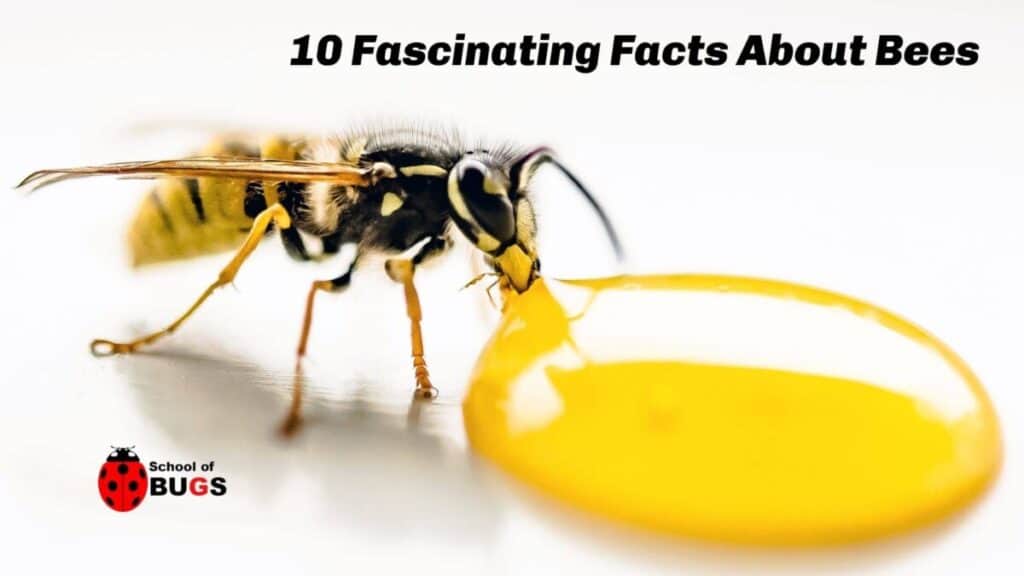
As you might already know, bees are incredibly important! These wonderful insects can be found on almost every corner of Earth.
But they are not just buzzing around, they play an important role in ecosystems across the world, and that is pollination.
Without bees as pollinators, agriculture as we know it (and with it, the food we eat) would not exist.
However, bees are not just useful. They are incredibly smart too, and fascinating in so many ways. These are the 10 lesser-known facts about bees that might surprise you:
#1 Most Bees Are Solitary
Bees are social creatures that live in hives, right? Or are they? Well, if that’s your first thought about bees, you are not wrong.
You are thinking about the honey bees, which are, indeed, the most common type of bee in the world.
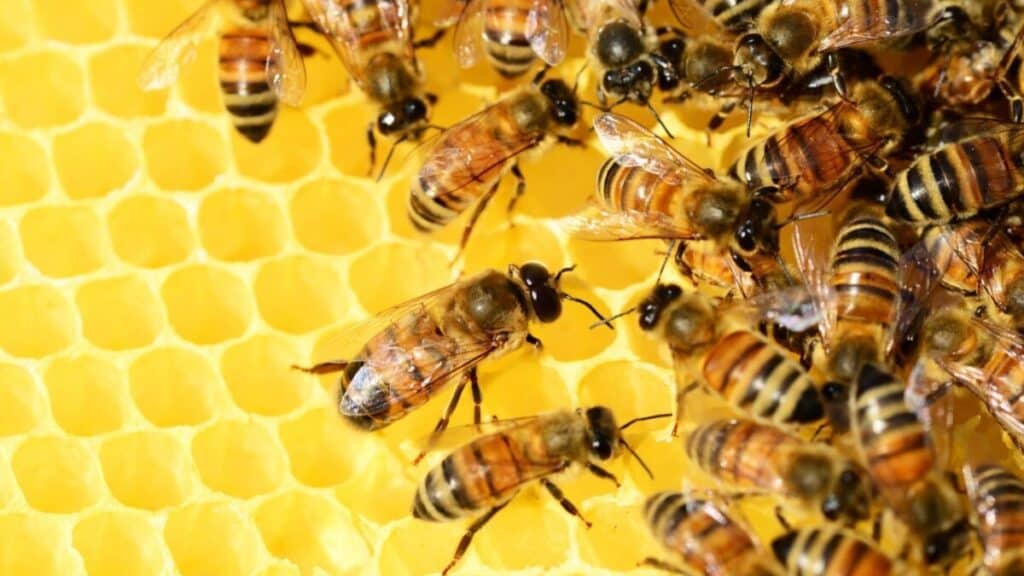
However, the truth is, there are around 20,000 different species of bees on our planet. Out of those, more than 90% live solitary lives.
Solitary bees include mason bees, carpenter bees, leafcutter bees, and many others. Most of them don’t live in groups but spend most of their lives alone.
#2 Not All Bees Make Honey
Out of 20,000 species of bees, only 11 can make honey. These are the social bees that live in hives, and they all belong to the Apis genus.
Out of those 11 species, though, only 1 makes most, if not all, of the honey that humans eat: Apis mellifera or the European honey bee.
A lesser-known fact is that there are more bee species in the genus of Apis that can produce honey, but they are not as widespread and the honey they make is not usually harvested by humans.
These include Apis cerana which is native to Asia as well Apis dorsata, also an Asian species known as the giant honey bee.
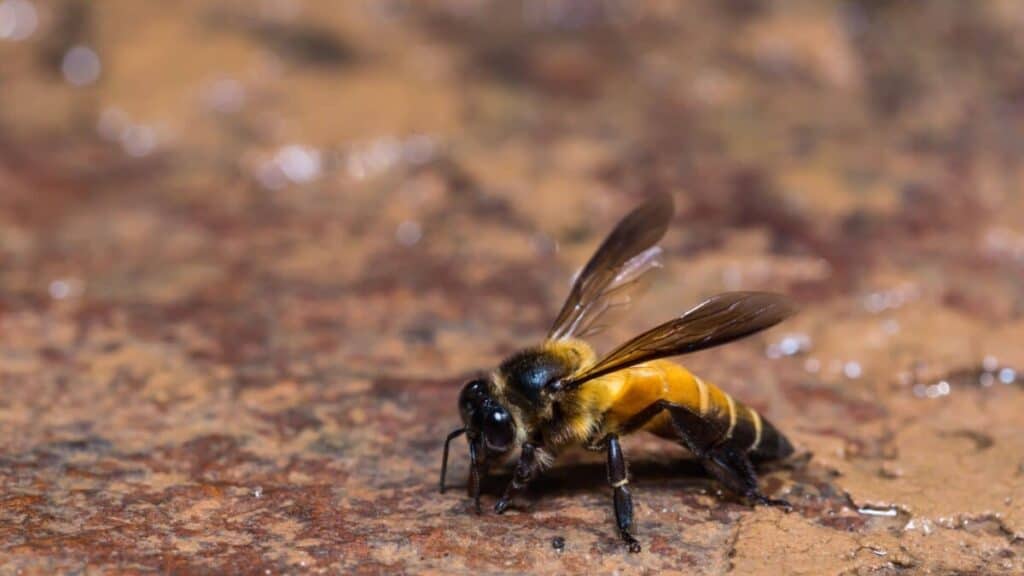
The giant honey bee produces huge amounts of honey, but it is also quite ferocious, and harvesting the honey can be very dangerous.
#3 Bees See in Ultraviolet
Bees don’t see the world the same way as we do, even though they can distinguish between different colors. These insects can see the ultraviolet light range, which is something humans can’t do.
This is very interesting because it also means that bees see flowers differently than us. Many flowers have ultraviolet patterns on them which are invisible to the human eye but help the bees distinguish the flowers from one another.

For example, many flowers have a bull’s eye pattern on them that helps bees locate the nectar.
On the other hand, bees don’t see the color red – they can’t distinguish it from black. In short, everything that bees see is a combination of green, blue, and ultraviolet.
#4 Bees Have 5 Eyes
Bees have two large eyes in the front of their head. They are quite obvious when you look at a bee. But what many do not know is that bees have 3 extra eyes on top of their heads.
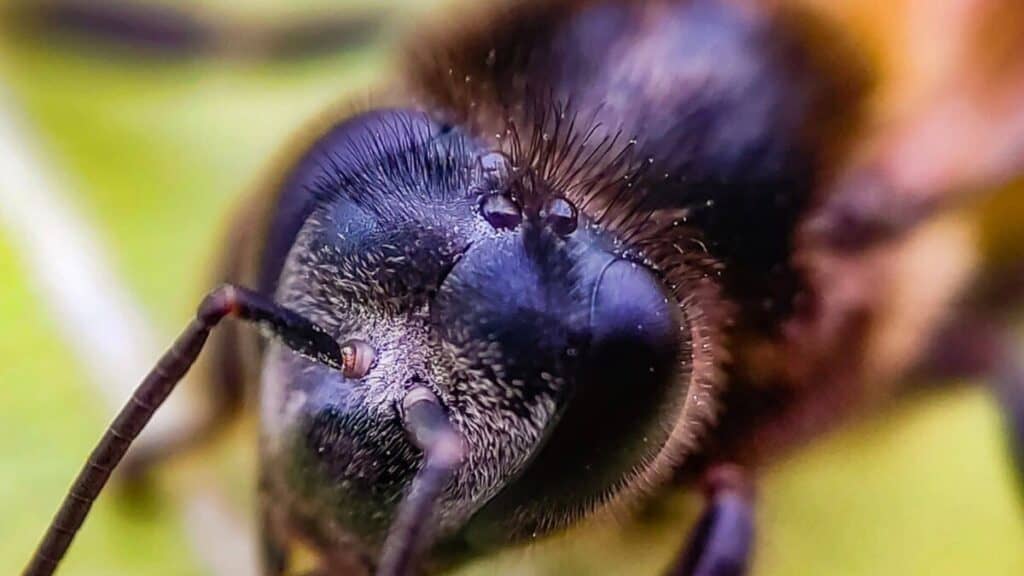
These additional eyes are smaller than the 2 main eyes. They are called ocelli and their purpose is to detect the intensity of light.
#5 Bees Are Expert Navigators
Bees are seriously good navigators. These tiny bugs will fly for miles if necessary in search of nectar, and they will always remember the location of their home and the food source they found.
This is possible because bees have amazing spatial memory and sort of a built-in compass.
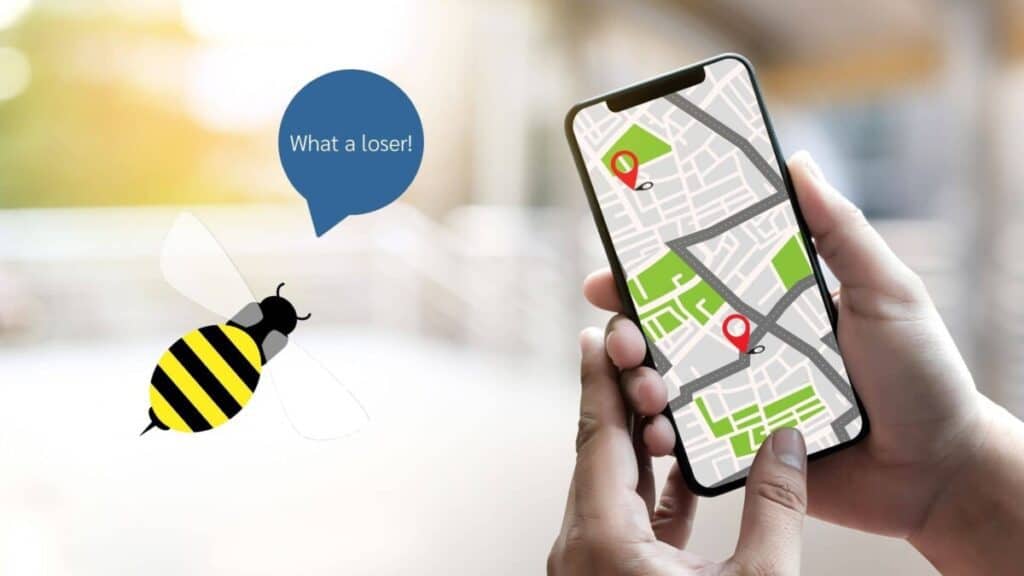
To navigate in the world, bees use the sun as a fixed reference point. This not only allows them to find their way each time without error, but honey bees can also communicate the position of a food source to other bees using the sun as a reference.
#6 Bees Have a Very Developed Sense of Smell
Honey bees have 170 odorant receptors which allow them to distinguish between a wide variety of different smells.
For bees, this is not just a matter of ‘stopping and smelling the flowers’ – their sense of smell is necessary for survival.
They use their sense of smell when foraging for food, and can learn new smells and associate them with food or danger.
Moreover, bees also use pheromones or chemical signals to communicate with each other. Their odorant receptors allow them to recognize members of their colony and send different messages throughout the hive.
#7 Honey Bees Communicate By Dancing
Did you know that honey bees are very good dancers? Yes, in fact, they perform an intricately choreographed dance called the waggle dance!
But why do bees dance? Well, it’s actually not for fun or pleasure. While that would be cute, honey bees actually dance in order to transmit information to each other.
Bees use the dancing movements to show their sisters the location of a food source.
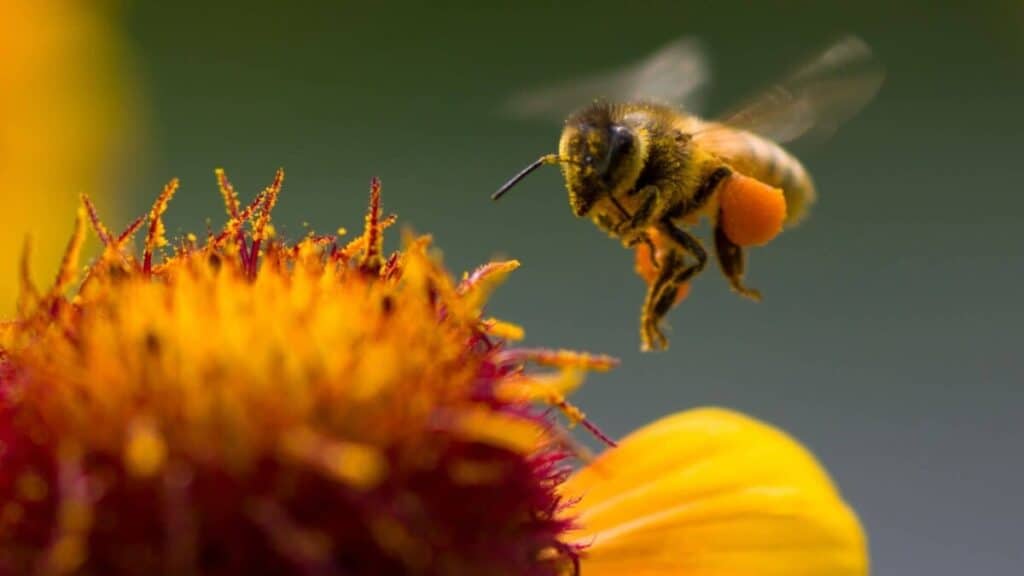
When dancing, bees walk up and down an axis that is actually showing the direction of the food source or something else they want to show.
While performing this movement, they also do the distinct waggle – the intensity of the waggle indicates the distance of the object they are describing. Fascinating!
#8 All Worker Bees Are Female
Every single bee you’ve seen in your life is likely a female. In honey bee colonies, most of the active bees are female.
However, there are 2 types of female bees: the worker bee and the queen. The Queen bee is a bee with reproductive organs, whose actual only purpose is to reproduce (or rather, make eggs).
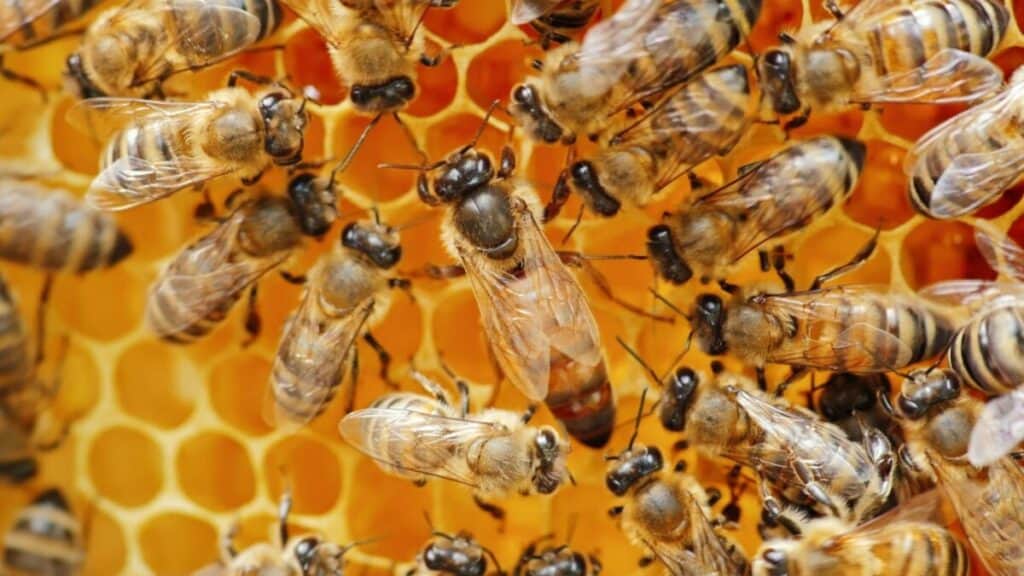
Worker bees are also female, but they do not have fully developed reproductive organs. As such, they do not mate and do not lay eggs.
Instead, they perform the useful tasks a beehive needs to survive, such as collecting pollen, making honey, building the honeycombs and tending to the queen and the young.
#9 Male Bees Die After Mating
So if all the worker bees are female, what’s up with the males? What do they do? Well, the truth is, most of the time they do nothing.
In honey bee colonies, a male bee’s life consists of laying around. They don’t even feed themselves – the worker bees are the ones who feed them.
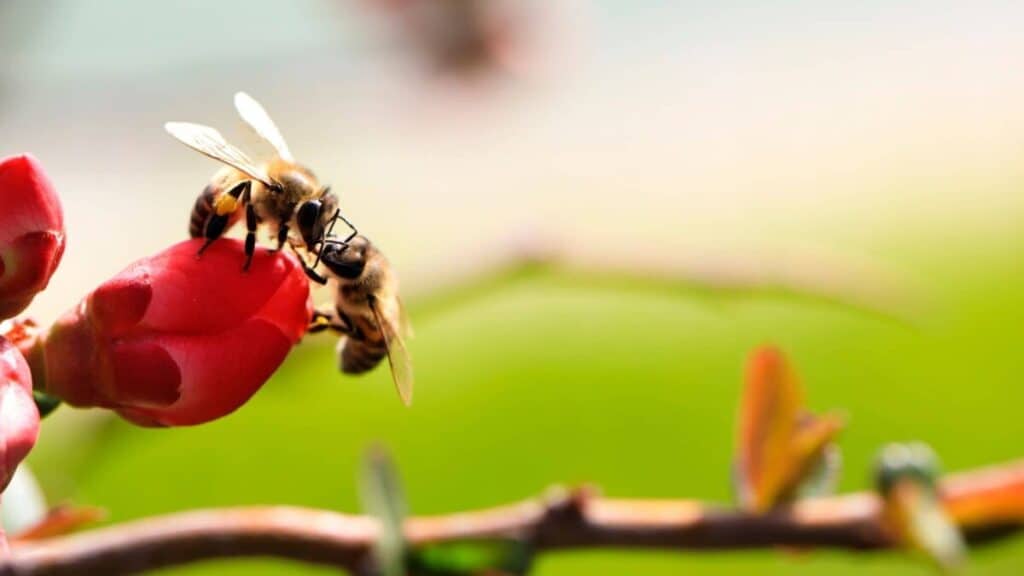
This whole time, the drones (this is what the male bees are called) are waiting to fulfill their only purpose in life: mating with the queen.
Once a new queen performs her nuptial flight and mates with a drone, the drone will die. Male solitary bees also die after mating.
#10 Bees Can Recognize Human Faces
Bees have brains approximately the size of poppy seeds, but these tiny brains are incredibly powerful! Scientists have shown that bees can learn to recognize individual human faces. Not only this, but they can remember them for a long time.
In one study, bees who have been thought to associate human faces with rewards, could do that even two days after the exercise.
To us, all bees look the same, but they seem to be able to recognize human individuals.
Truth be told, bees might not be able to associate a human face with a specific human person. They are great and recognize patterns, and to them, a human face might appear as just a strange-looking flower.
However, this is yet another proof of how incredibly smart bees are!
Alright, that’s it for this article, here are a few hand-selected articles that you might also find interesting reads:
7 Amazing Facts About How Bugs BreatheFun Facts About Ants
What Insects Drop Their Wings? Key Facts To Know
Recent Posts
Tiny Black Bugs in Bathroom NO WINGS: What They Are and What to Do!
Finding tiny black bugs in your bathroom can be uncomfortable, to say the least. Especially if they are persistent, or they appear in very large numbers, which they often like to do. When it...
Tiny Black Bugs in Plant Soil - What Are They & What To Do About It
A short horror story: You get a new houseplant. You do your best to take care of it. You’ve ensured that it has the right soil, the right amount of sun, it gets enough water. And then one day, you...

